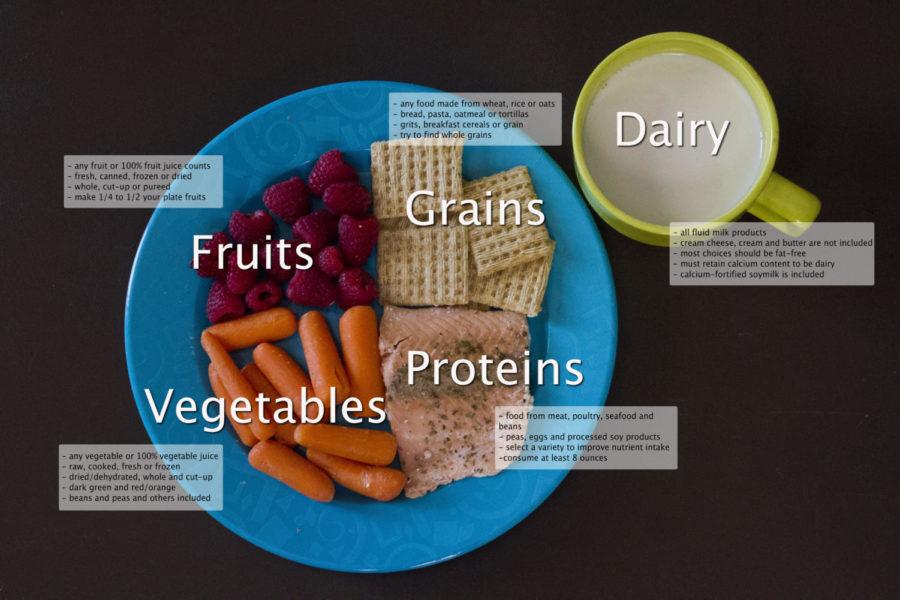Understand, apply MyPlate to busy schedules
Tiffany Herring/Iowa State Daily
Setting your plate is the best way to make sure you maintain a healthy diet and lifestyle. Information obtained from choosemyplate.gov.
October 22, 2014
After Michelle Obama announced the conversion of the United States Department of Agriculture MyPyramid to a new MyPlate format in June of 2011, organization of how citizens should go about arranging their plate with important food groups became easier to understand and apply to everyday consumption choices.
Prior to 2011, The USDA used MyPyramid as a visual for the general population to reference when trying to attempt healthy eating. Anne Oldham, academic adviser and didactic program director, breaks down the principals of healthy eating and the reason for conversion from pyramid to plate in 2011.
“The MyPlate is a newer visual representation to think about healthy eating,” said Oldham. “The most important thing I feel with healthy eating is that people should try to focus on a variety of foods and also think about [choosing] more nutrient dense foods.”
By following MyPlate recommendations, individuals can stay away from turning to unnecessary dieting and focus on having a healthy, balanced diet. They can acquire a lifestyle suitable to both individual and recommended needs.
In coherence to goal setting, it is important for individuals to know that everyone has different nutritional needs and what works for someone may not work for somebody else. For example, if someone had to choose between two foods of the same caloric value and had a personal goal of maintaining weight, then the choice would not make a difference. On the other hand, Oldham pointed out that individuals must be aware of the nutritional value of their food when thinking about overall health.
“If someone is focusing on caloric intake for weight loss or weight management, then total calories is going to be important,” Oldham said. “If someone is looking at the variety of foods in their diet and they’re not eating a large amount of varieties in food, then a balance diet incorporating more diverse foods in their diet can be beneficial.”
One of MyPlate’s dietary guidelines recommend having five servings of fruits and vegetable a day, a recommendation Oldham points out most students aren’t meeting. She recommends that individuals should think about expanding that specific dietary need and incorporating a variety of nutrients into the diet.
The amount of time college students dedicate to just eating throughout a normal school day is very minimal when in comparison to the rest of the day’s agenda. Students typically find time to eat when food is readily available and easily accessible, like pizza.
For example, a study conducted by the USDA revealed that over 13 percent of Americans consume pizza on any given day as a go-to filler, with college students falling within the top percentage of that consumption rate.
With busy schedules, it is important to visit dining halls in search of incorporating MyPlate into your meal. By doing so, students may be able to avoid confusion and increase awareness of what they are using to fuel their body.
USDAs MyPlate website is filled with practical information that builds healthier diets for individuals. The site provides resources and tools for dietary assessment, nutrition education and other user-friendly nutrition information.
For more details visit http://www.choosemyplate.gov/







